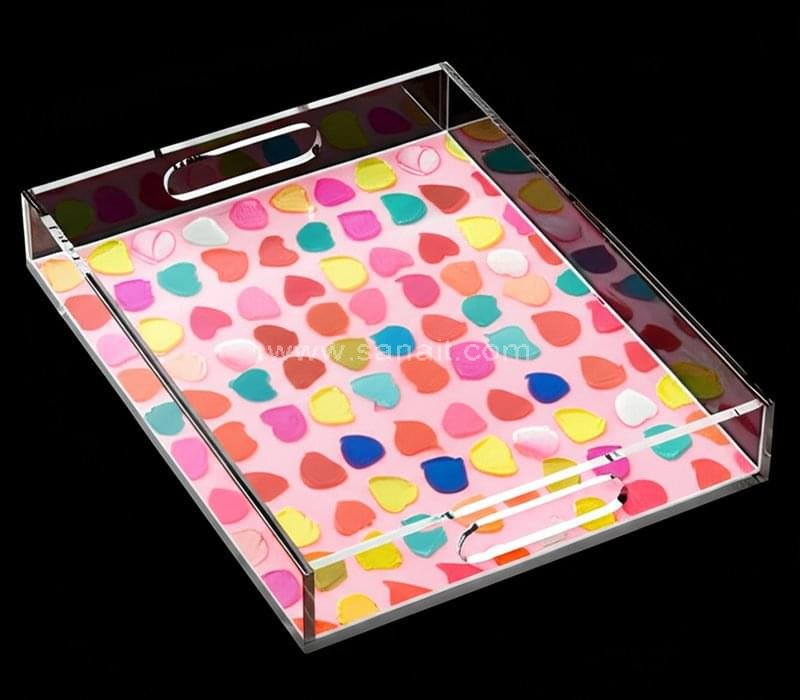In today’s fast-paced world, where functionality meets aesthetics in everyday items, acrylic trays have emerged as a staple in homes, offices, and even hospitality settings. These versatile pieces aren’t just about holding objects—they’re about creating a seamless interaction between the user and their environment. But what makes one acrylic tray stand out from another? It all boils down to thoughtful design that prioritizes user experience (UX). In this article, we’ll explore how designers can elevate these simple trays from mere utility items to intuitive, enjoyable tools that enhance daily life.



First off, let’s talk about the material itself. Acrylic, often known by its trade name Plexiglas, is a lightweight, shatter-resistant alternative to glass. Its clarity gives it a modern, almost ethereal look, which can make any space feel more open and inviting. However, the real magic happens when designers leverage these properties to improve UX. For instance, the transparency of acrylic allows users to quickly see what’s on the tray without lifting or tilting it, reducing frustration in busy scenarios like serving drinks at a party or organizing desk supplies. Imagine fumbling through a cluttered drawer versus glancing at a clear tray—it’s a small change, but it saves time and mental energy.
One key aspect of design that directly impacts user experience is ergonomics. Handles, for example, are often overlooked, but they can make or break usability. A well-designed acrylic tray might feature curved, ergonomic grips that fit comfortably in the hand, preventing slips and strains. I’ve seen trays with overly sharp edges that dig into your palms after just a few minutes of carrying—definitely not user-friendly. In contrast, rounded edges and subtle contours can turn a basic tray into something that feels natural to hold. Designers should also consider the tray’s weight distribution; balancing the base to avoid tipping when loaded unevenly is crucial, especially for trays used in kitchens or for serving food.
Color and customization play a huge role too. While clear acrylic is classic, tinted versions in soft pastels or bold hues can align with personal tastes or brand identities. Think about a hotel using branded acrylic trays in room service—matching the color to their logo not only reinforces branding but also creates a cohesive, luxurious feel for guests. From a UX perspective, customization options like engraved patterns or modular inserts allow users to adapt the tray to their needs. For example, a tray with removable dividers could serve as a jewelry organizer one day and a snack holder the next. This flexibility encourages repeated use, turning a one-off purchase into a beloved household item.
Beyond the basics, innovative features can take UX to the next level. Anti-slip surfaces, achieved through textured bottoms or silicone pads, prevent items from sliding around, which is a godsend for trays carrying fragile glassware or electronics. Stackable designs are another winner; they save storage space in small apartments, making the tray more practical for urban dwellers. I’ve personally appreciated trays with built-in drainage holes for use in bathrooms—perfect for holding wet toiletries without creating a puddle. These thoughtful additions show how design anticipates user pain points, like clutter or mess, and addresses them proactively.
Sustainability is increasingly influencing design choices, and acrylic trays are no exception. While acrylic is petroleum-based, many manufacturers now offer recycled or bio-based versions that reduce environmental impact. Users today are more eco-conscious, so highlighting these materials in product descriptions can enhance perceived value. A tray made from recycled acrylic not only feels good to use but also aligns with users’ values, fostering loyalty. Designers should communicate this transparently—perhaps through subtle labeling or packaging—to build trust and improve the overall experience.
To illustrate, let’s look at a real-world example. Brands like CB2 or IKEA have nailed this with their acrylic tray lines. CB2’s “Acrylic Serving Tray” incorporates a minimalist design with raised edges to contain spills, making it ideal for coffee tables. Users rave about how it blends into modern decor while being easy to clean—just a quick wipe with a damp cloth. On the flip side, poorly designed trays, like those with flimsy construction that warp over time, lead to negative reviews and returns. This underscores the importance of durability testing during the design phase; a tray that lasts years enhances UX by providing reliability.
Accessibility is another angle worth considering. For users with mobility issues, trays with larger handles or lightweight builds can make a world of difference. Inclusive design ensures that everyone, from kids to seniors, can interact comfortably. Features like glow-in-the-dark edges for low-light environments might seem niche, but they cater to specific user groups, broadening appeal.
Of course, aesthetics shouldn’t be underestimated. A beautifully designed acrylic tray can elevate a room’s vibe, turning mundane tasks into pleasurable ones. Pairing sleek lines with complementary materials, like wood accents on the handles, creates a hybrid look that’s both functional and stylish. In e-commerce, high-quality photos showing the tray in real-life settings help users visualize how it fits their space, reducing buyer’s remorse and boosting satisfaction.
In wrapping up, enhancing user experience through design in acrylic trays isn’t about overcomplicating things—it’s about empathy and foresight. By focusing on ergonomics, customization, innovation, sustainability, and inclusivity, designers can create products that users not only need but love. Whether you’re a product designer, a homeowner shopping for organization solutions, or a business owner curating your space, remember: great design turns everyday items into extensions of ourselves. Next time you pick up a tray, think about how its design makes your life just a little bit easier. After all, in the realm of home goods, it’s the small details that make the biggest impact.
